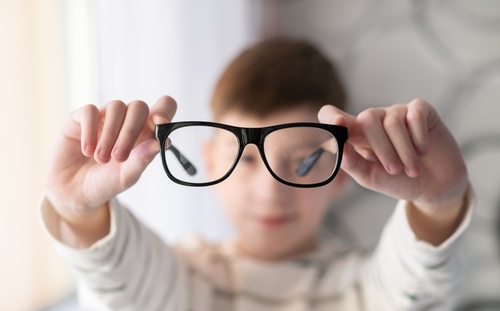
Myopia affects nearly 30% of the U.S. population and is projected to impact half of the world's population by 2050. This sharp increase is believed to be driven by a combination of genetic and environmental factors. By understanding myopia, and uncovering common misconceptions, we can take necessary steps to preserve our vision and eye health.
Common Misconceptions about Myopia
Many people hold misconceptions about myopia, which can cause confusion and anxiety. One of the most common myths is that wearing glasses or contacts will make your eyes weaker and increase your level of myopia. This is not true. Glasses or contacts help the eye focus light correctly on the retina, but they do not affect the physical length of the eye, which is the root cause of myopia.
Another common misconception is that you can outgrow myopia. While it's true that myopia often starts in childhood and may progress during the growth years, it typically stabilizes in adulthood. However, this does not mean the condition has been outgrown or cured. The physical changes to the eyeball that cause myopia are permanent.
Is Myopia Curable?
There's currently no cure for myopia. While we can correct the symptoms of myopia with glasses, contact lenses, or refractive surgery, these treatments do not stop the eye from continuing to grow or reverse the changes that have already occurred.
The Importance of Myopia Management
Given that myopia cannot be cured or reversed, the importance of myopia management cannot be overstated. Myopia management aims to slow down the progression of myopia, reducing the risk of developing high myopia and associated eye diseases later in life.
High levels of myopia increase the risk of serious eye conditions such as retinal detachment, glaucoma, and cataracts. By slowing down the progression of myopia, we can reduce the likelihood of these conditions, preserving vision and overall eye health.
Common Methods for Controlling Myopia Progression
Myopia management involves various methods, each with its advantages. One of the most common methods is the use of atropine eye drops. Atropine has been shown to slow down the progression of myopia, although the exact mechanism is still not fully understood.
Orthokeratology, or Ortho-K, is another method. It involves wearing specially designed gas permeable contact lenses overnight to reshape the cornea temporarily. This reshaping can help to slow down the eye's growth and, thus, the progression of myopia.
Finally, multifocal contact lenses and glasses are also used in myopia management. These lenses have different powers in different zones, which can help to reduce the eye's focusing effort and slow down the progression of myopia.
The Role of Regular Eye Check-ups
Regular eye check-ups play a crucial role in managing myopia. They allow for early detection and intervention, which can slow down the progression of myopia and reduce the risk of developing serious eye conditions later in life.
During an eye check-up, your eye doctor can measure your level of myopia and monitor any changes over time. They can also evaluate the health of your eyes and recommend appropriate myopia management strategies based on your specific needs and circumstances.
Embracing a Proactive Approach to Myopia Management
While myopia is not curable or reversible, it can be managed effectively with a proactive approach. By understanding myopia, dispelling common misconceptions, and embracing myopia management strategies, we can slow down the progression of myopia and preserve our vision and eye health.




